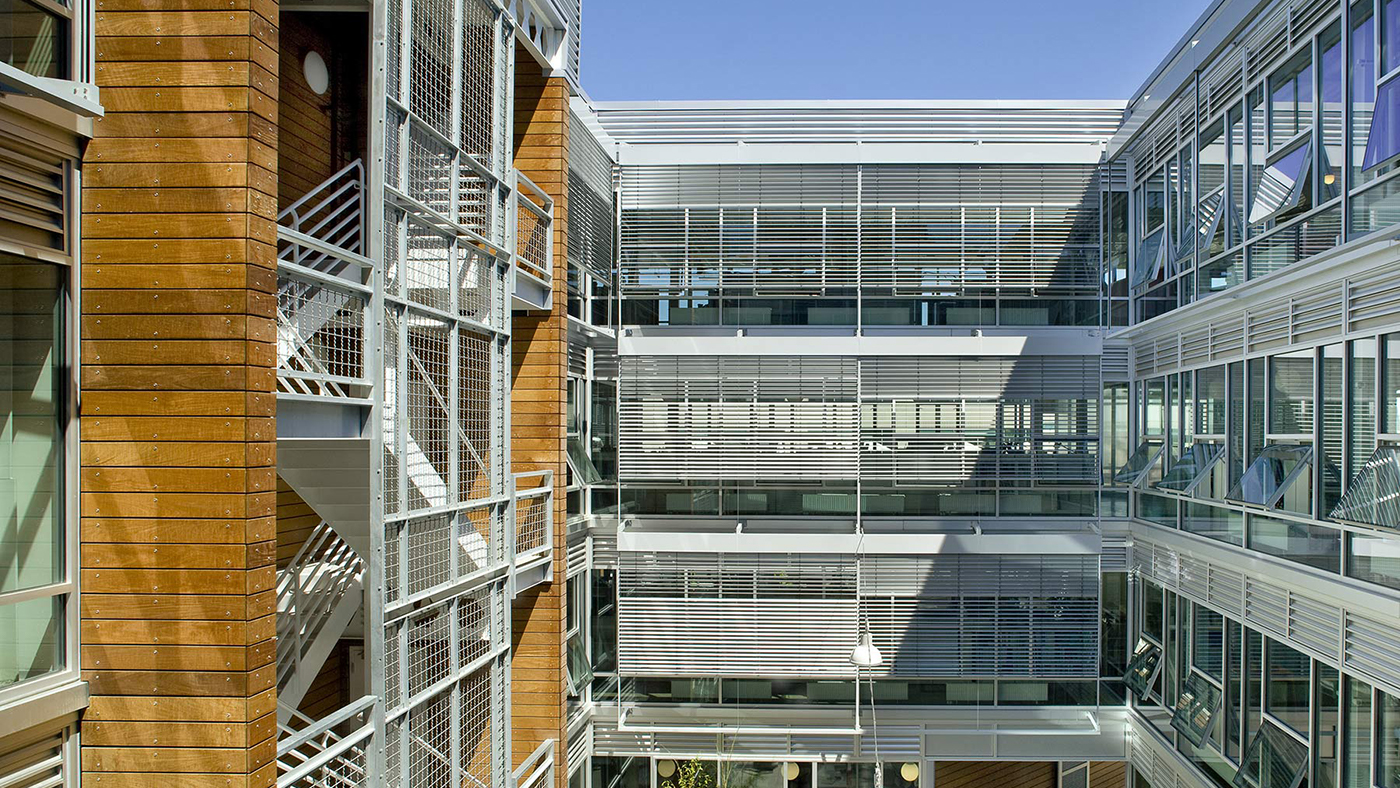Lessons learned from advanced facade applications in Europe and North America.
Status: Completed
Funding Sources: CBE Industry Consortium California Energy Commission PIER Program
Project Objective
Identify effective design strategies that minimize building energy use while simultaneously enhancing the comfort and well-being of the building’s occupants; secondly, identify practical considerations related to the successful design and implementation of advanced facade solutions on projects.
Significance to Industry
One of the essential considerations in the design, engineering and operation of ultra-low energy buildings is the building envelope. Over the past 20 years, a number of buildings have been built in Central and Northern Europe that utilize a range of facade technologies more advanced than those typically implemented on U.S. buildings. Since European commercial buildings use air conditioning selectively, and are expected to provide daylight, views, and natural ventilation to all occupants – far more attention is paid to the design and construction of the building envelope. As the building industry pushes for improved performance in buildings, there is much value to be gained by exchanging conceptual and technical knowledge between North American and European professionals.
Research Approach
Through a critical analysis of case study buildings in North America and interviews with building professionals in both northern Europe and North America, this report identifies facade design solutions that enable the development of spaces that minimize the need for HVAC and lighting energy use, while maximizing occupant well-being and connection to the outdoors. The study probes questions related to the benefits and barriers to the implementation of advanced facade design strategies in North America.
U.S. and Northern European professionals with substantial experience in the design and construction of building envelopes were sought out in order to obtain their perspective on the design and construction of high-performance facades, as well as the benefits and barriers to the adoption of advanced facade systems.
Four North American buildings were selected for facade case studies. These buildings demonstrate envelope strategies ranging from simple yet effective designs to advanced dynamic facade systems. The case studies illustrate the benefits as well as the challenges seen in specific solutions with respect to energy use, comfort, and operation and maintenance.
Publications and Reports
Zelenay, K., M. Perepelitza and D.Lehrer, 2011. High-Performance Facades: Design Strategies and Applications in North America and Northern Europe. California Energy Commission. Publication number: CEC-500-99-013.

